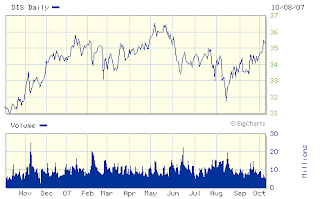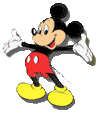Disney, as a corporation owns many of the media networks that we watch on a daily basis, for example ABC, Miramax, EPSN, Hollywood Pictures, Buena Vista and Pixar. Providing world wide entertainment, as well as owning their own publishing company Hyperion, publishing well known Authors such as Comedian/ Author
Steve Martin and
Mitch Albom best known for his books The 5 People You Meet In Heaven, and Tuesdays With Morrie.
Disney also own Major Cable networks The Disney Channel, ABC, Playhouse Disney, and Toon Disney.
Here is a list of Disneys Principal Subsidiaries listed from resources at
www.answers.com:-
ABC, Inc.; A&E Network (37.5%); Anaheim Sports; Buena Vista Home Video; Buena Vista International; Buena Vista Internet Group; Buena Vista Pictures Distribution, Inc.; Buena Vista Television; Childcraft Educational Corp.; The Disney Channel; The History Channel; Disney Consumer Products International, Inc.; Disney Development Co.; The Disney Store, Inc.; EDL Holding Co.; Euro Disney S.C.A. (49%); E! Entertainment Television (39.5%); ESPN (80%); Fairchild Publications; Hyperion; Infoseek Corporation; KHJ-TV, Inc.; Lake Buena Vista Communities; Lifetime Entertainment Services (50%); Miramax Films; Reedy Creek Energy Services, Inc.; Touchstone Films; Touchstone Television; Walt Disney Attractions; Walt Disney Imagineering; Walt Disney Pictures and Television; WCO Parent Corp.; WED Transportation Systems, Inc.
Disney products are mainly marketed for children, with sales of their toys and loved cartoon characters bringing their profits through the roof!
The Disney brothers built a reputation for quality animation, utilizing cutting-edge technological developments such as sound and color, and producing feature-length animated films.
The popularity of Disney's products, which included merchandise based on their animated characters, such as Mickey Mouse, Donald Duck, and Snow White, was instantaneous and unmistakable, not only in the United States but in other countries.
If you think about it Disney is everywhere, you have for example, Disney Stores in most shopping centres, they cover most children’s television programmes as well as some adult ones, Disney Movies their latest being High School Musical One & Two leading me onto DVD Sales and Movie Merchandise, and the Disney Theme Parks all over the world.
This was all started by Walter Elias Disney: - Producer, Director, Screenwriter, Voice Actor, Animator, Entrepreneur and Philanthropist. In partnership with his brother Roy O Disney started off what is now known as Walt Disney Company.
At the end of the twentieth century, the Walt Disney Company was the second largest media conglomerate in the world (behind AOL Time Warner), with a wide array of domestic and international investments. The company's revenues for 2000 were over $25 billion. Disney owned the American Broadcasting Company (ABC) television network, broadcast TV stations, and radio stations and networks, and maintained partial ownership of several cable networks, including 80 percent of ESPN and 38 percent of A&E and Lifetime. Walt Disney Studios produced films under the Touchstone, Hollywood Pictures, and Miramax labels. In addition, the company was also involved in home video, recorded music, theatrical productions, and consumer products, which were sold at over 600 Disney Stores around the world.
As I have already mentioned Disney’s main target audience is children, it is a great marketing strategy as Disney don’t seem to bring out new toys unless in conjunction with the latest Disney film release. It is a truly great merger between Film and Toys.

The Future of Disney:-
Disney Consumer Unit To Sell New Line Of Character-Themed Fruits, Vegetables.
Bizzarre as it may sound this is the lastest Disney product to go on sale in America. Disney Consumer Products said it will use the popularity of its theme park characters to appeal to children and launch a line of products called Disney Garden, to be sold in the produce aisle of stores nationwide including Winn Dixie, Albertsons, and Price Shopper.
New items include Mickey-shaped snack trays with combinations of celery, peanut butter and raisins or apples, cheese and crackers and others. Other items include teriyaki sugar snap peas, honey orange carrot coins, cheesy broccoli bites and miniature apples, peaches, pears, plums and oranges. Disney said a year ago that it would restrict its use of advertising targeting children. It is one of a dozen companies that had made a pledge before a Federal Trade Commission hearing in July that put more pressure on the companies to help curb the growing child obesity problem through more responsible marketing.
Disney has previously sold fruits with character stickers on the packaging as well as frozen pizza and hamburger patties made in the shape of Mickey Mouse's head.
As well as this new product being unveiled this week, Disney has also had some disruption within the company, with the board of directors at Children Place (Company that run the Disney Stores) ousting their Chief Executive who isn’t leaving quietly saying that his resignation was “solely attributable to a power play by certain members of the board” and upbraiding the company for making remarks “that have disparaged my good name and reputation.” This is likely to create an awkward situation for the management of Children’s Place, which operates the Disney Store chain. Mr. Dabah, 54, is still a board member and the company’s largest single shareholder.



